PALM BEACH, Fla. _ Bengals founder Paul Brown once mused that records bored him.
But on Tuesday, he no doubt would have been quite interested to hear that the NFL owners agreed to put the statistics of the All-America Football Conference into the pro football record book.
Not that his seven championships break a tie with George Halas, Bill Belichick and Curly Lambeau and put him at the top of Pro Football Reference Wednesday morning 33 years after his death, 58 years after the birth of the Bengals, and nearly 70 years after that first win over the Miami Seahawks to open the Cleveland Browns' 1946 AAFC season.
What would have caught Paul Brown's eye is that his granddaughter, Bengals executive vice president Katie Blackburn, is a member of the competition committee that recommended the addition to the owners at their annual league meeting that came to an end Tuesday.
"It's nice to have all the records together," said Blackburn, who attended a few of these meetings with her grandfather.
Back at Paycor Stadium, her father, Bengals president Mike Brown, who made certain the Bengals were born in Cincinnati as his father's confidant, is thinking as much about Paul's players as the man himself.
"Not only my dad's records, but all the great players who are getting a fair shake," said Mike Brown, 89 years young clicking off statistics he first learned as a junior high schooler in Cleveland. "Look at Marion Motley. He had more yards per carry in his career than Jim Brown."
Brown, who tore off 5.2 yards per carry for the Browns of the '50 and '60s, became regarded as the greatest player of all-time. Motley, who was the Browns running back in the four seasons they won all four AAFC championships and then three NFL titles in the '40s and '50s, had 5.7.
Both played for Paul Brown. On Wednesday morning for the first time, Motley is ahead of Jim Brown on the yards per career list. Both are behind quarterbacks Michael Vick, Randall Cunningham and Lamar Jackson, but Motley now leads all running backs who ever played.
"There were great players in that league," Mike Brown said. "Three of the teams, Cleveland, San Francisco and Baltimore, joined the National Football League and in that first year, 41 percent of the players were former All-American players. That would indicate just how good those players when they came into the league and really helped teams like the Giants."
In that first season, 1950, Paul Brown and his intruders from the AAFC stunned the world going through the NFL at 10-2 and winning it all, giving them five straight titles in two leagues.
They would win two more with Otto Graham as their quarterback during the '50s, and on Wednesday morning, Graham had thrown himself back into a tie with Tom Brady at the top of the record books for quarterbacks with seven championships.
"I guess Otto was my favorite," Mike Brown said. "He was seen as the leader of the Browns, but all those guys were such great players. Marion. Lou Groza. Dante Lavelli, Dub Jones, Mac Speedie. So many others. Hall-of-Famers all of them."
Mike Brown is never very far away from the 13-year-old who loved his Browns. That 1948 undefeated AAFC championship team has always been his favorite and the team picture has followed him. Now it hangs on the wall of his team's library at Paycor.
It also now hangs in NFL history. At 14-0, they join the 17-0 Dolphins of 1972 as the only two teams recognized by the league with a spotless regular season and postseason.
"You look at the receivers on that team. Lavelli. Speedie. Dub Jones. They were big and they were fast. They could run," Brown said. "They would grace any field."
So would Paul Brown, of course, and now history has caught up with his innovations. The man who invented the playbook, the face mask, the radio helmet, and almost everything else you see in pro football today, is now seventh on the all-time coaching list with 213 regular-season wins. He's one of eight to win at least 200 games and one of the guys he passed on this Wednesday morning is Steelers Hall-of-Famer Chuck Noll, his former player with 193.
"It's nice for my father," Mike Brown said. "The statistics speak to what he accomplished. He was out of the game for (six years) when he was really at the top and before he came back here late in his career. Whatever the numbers are, he'll always be number one in my eye."
A look at some of the best images of Paul Brown, founder and first head coach of the Bengals.
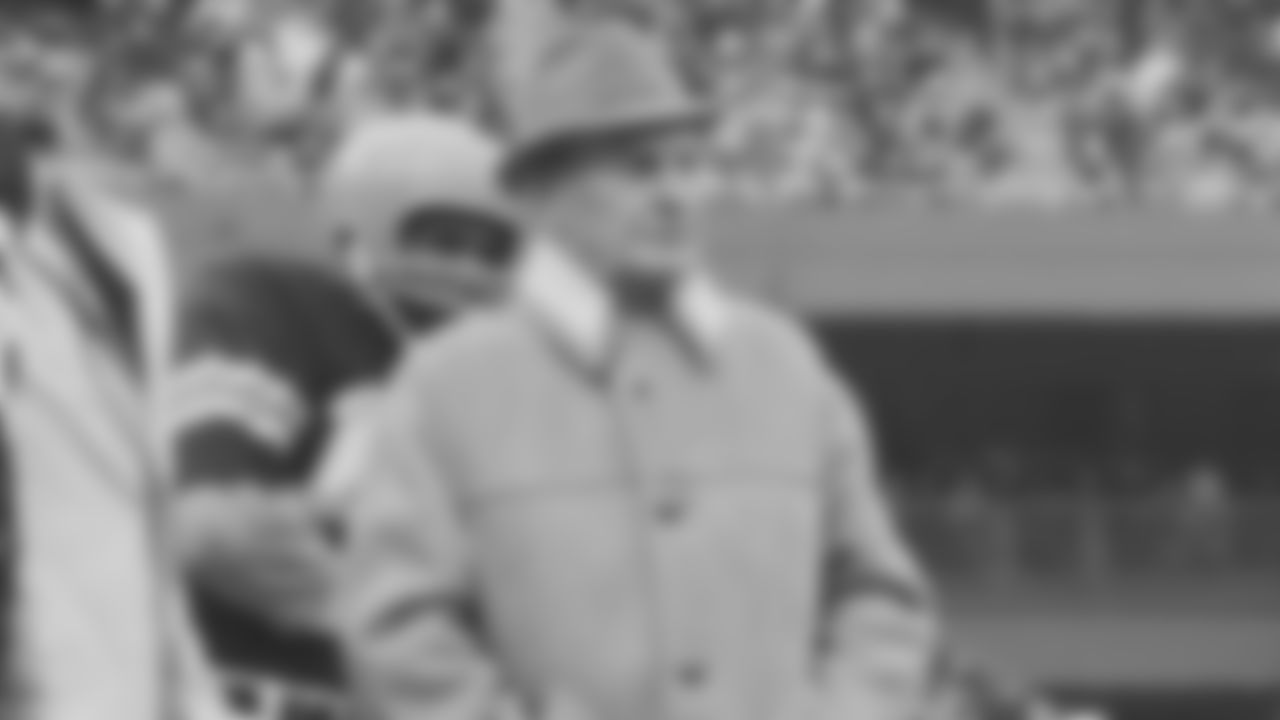
Cincinnati Bengals coach Paul Brown is pictured at Riverfront Stadium in Cincinnati, Ohio.

Cincinnati Bengals coach Paul Brown operates a movie projector beside which he spends many hours each week going over films of the Bengal's and their opponents. He was named the Associated Press Coach of the Year of the AFL in Cincinnati on Dec. 11, 1969. Brown, one of football's most successful coaches, is a stickler for fundamentals and precision. (AP Photo/Harvey Eugene Smith)
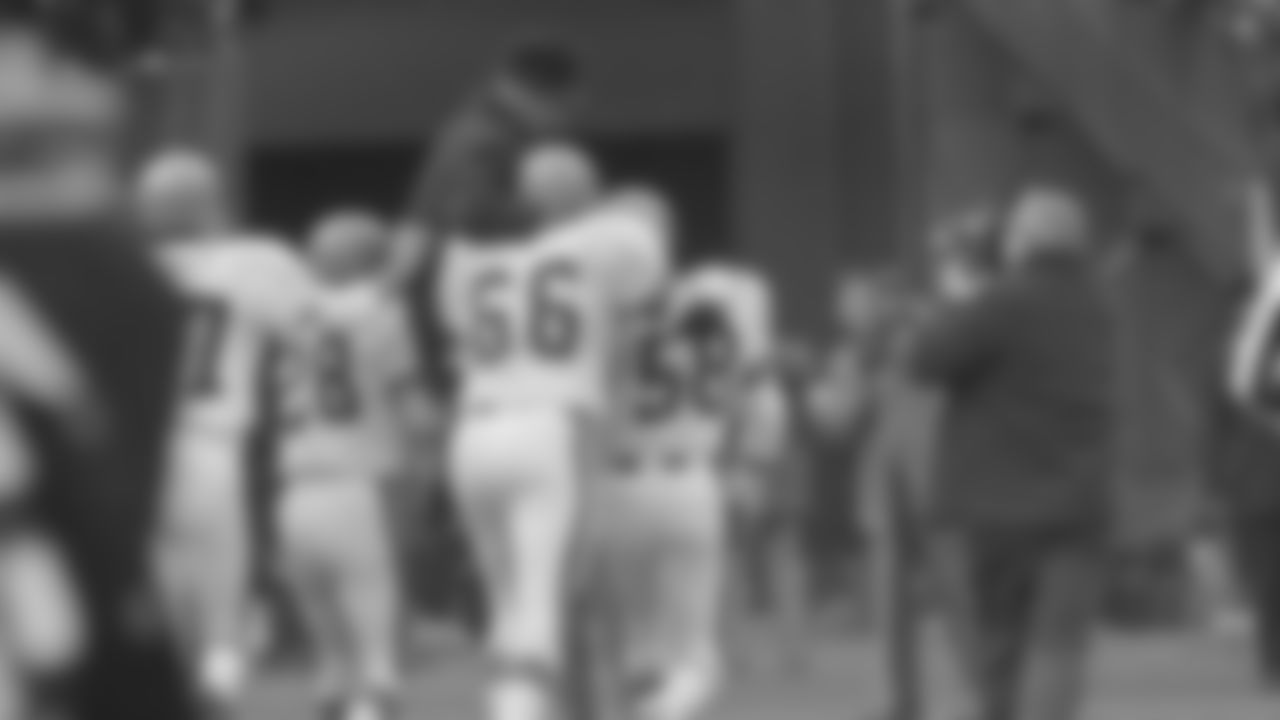
Paul Brown, Hall of Fame Class of 1967, is hoisted by Bill Bergey (66), Al Beauchamp (58), and John Guillory (28) on Dec. 20, 1970, and given a ride to the dressing room after the Bengals beat the Boston Patriots, 45-7, to win the title in the Central Division of the American Conference of the NFL. The game took place in Cincinnati, Ohio (AP Photo/Gene Smith)
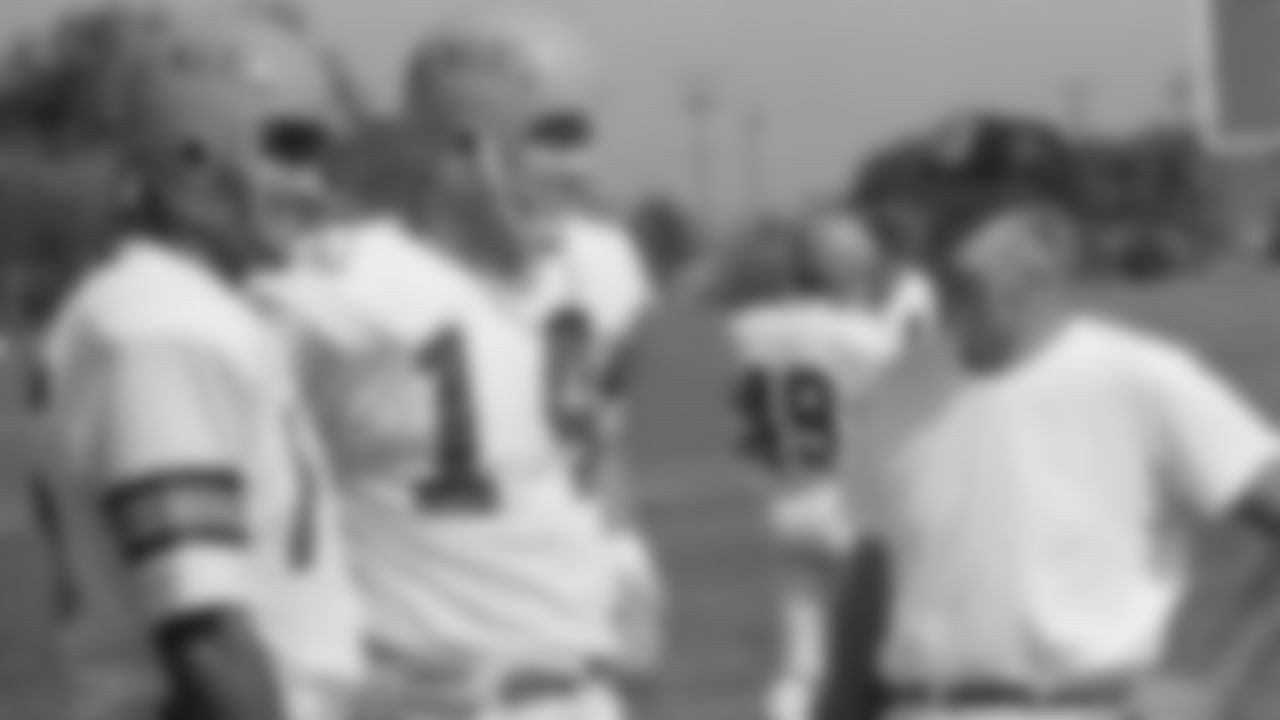
Cincinnati Bengals' head football coach Paul Brown, right, talks with two of his quarterbacks during a workout on Aug. 21, 1970, at their training camp in Wilmington, Ohio. At left is Dave Lewis, also a punter, and Sam Wyche, center. (AP Photo/Gene Herrick)

Head coach Paul Brown: 1968-75
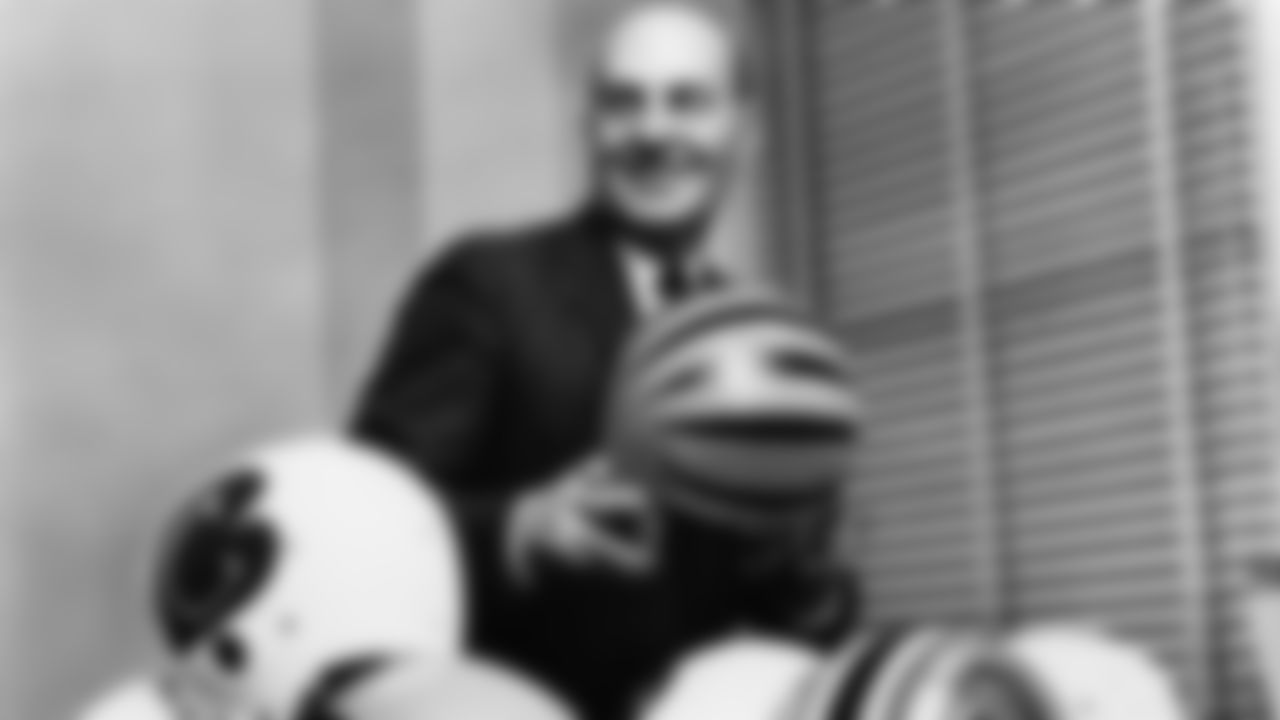
1968: Paul Brown, President of the Cincinnati Bengals of the American Football League, is trying to select the design of the team's helmets to be worn by his team when it starts play in the A.F.L.
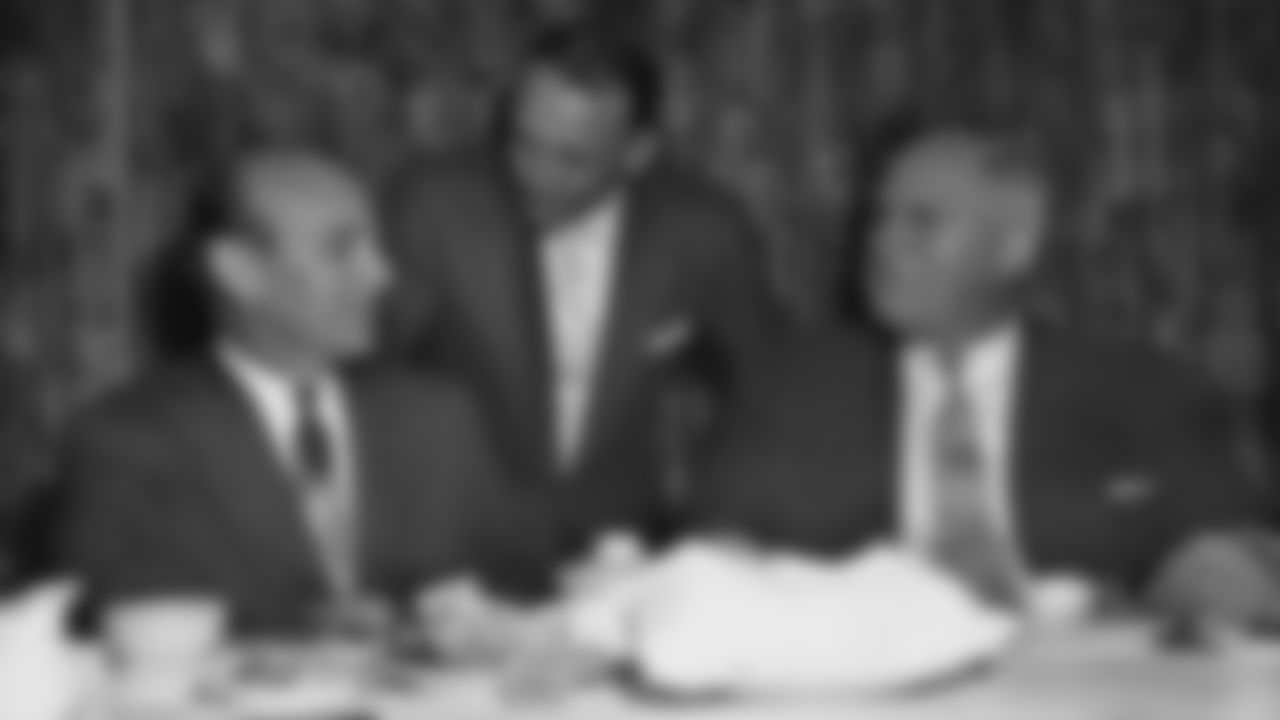
Football coaches Paul Brown, left, and Steve Owen, right, ponder over a question asked by Eddie Stanky, center, manager of the St. Louis Cardinals, at a banquet held in Mobile Ala., Jan. 8, 1954, for members of the North and South football teams. The teams will face each other in the Senior Bowl game in Mobile on Jan. 9. (AP Photo)
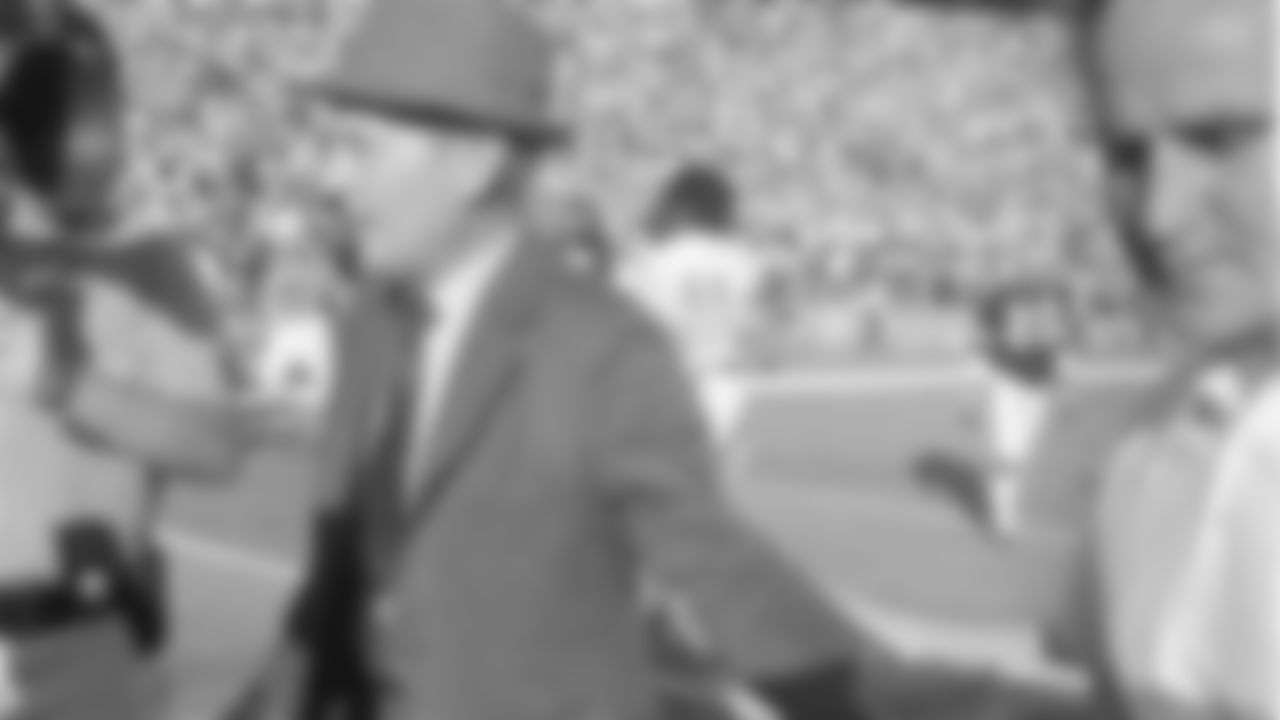
Don Shula, right, coach of the Miami Dolphins, walks away after talking to Paul Brown, Cincinnati Bengals coach, Dec. 23, 1973, in Miami's Orange Bowl.
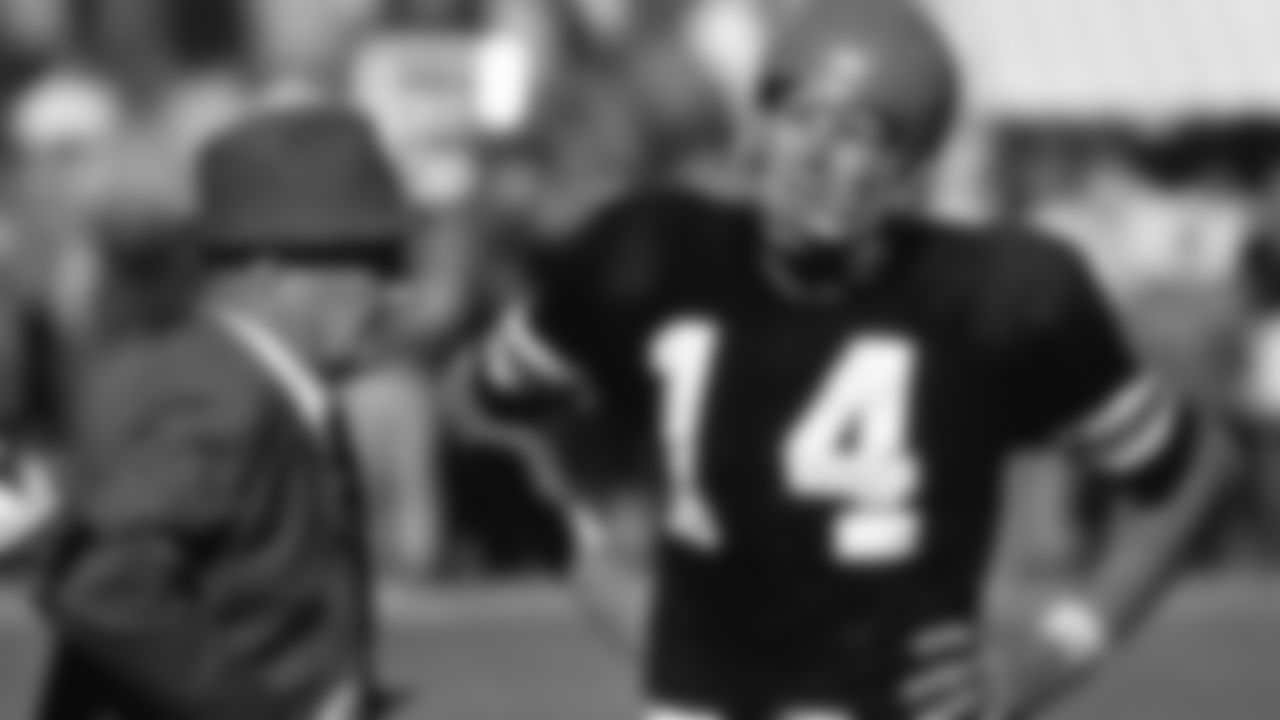
Paul Brown, Hall of Fame Class of 1967, talks to his quarterback as he coaches the Cincinnati Bengals during a game.
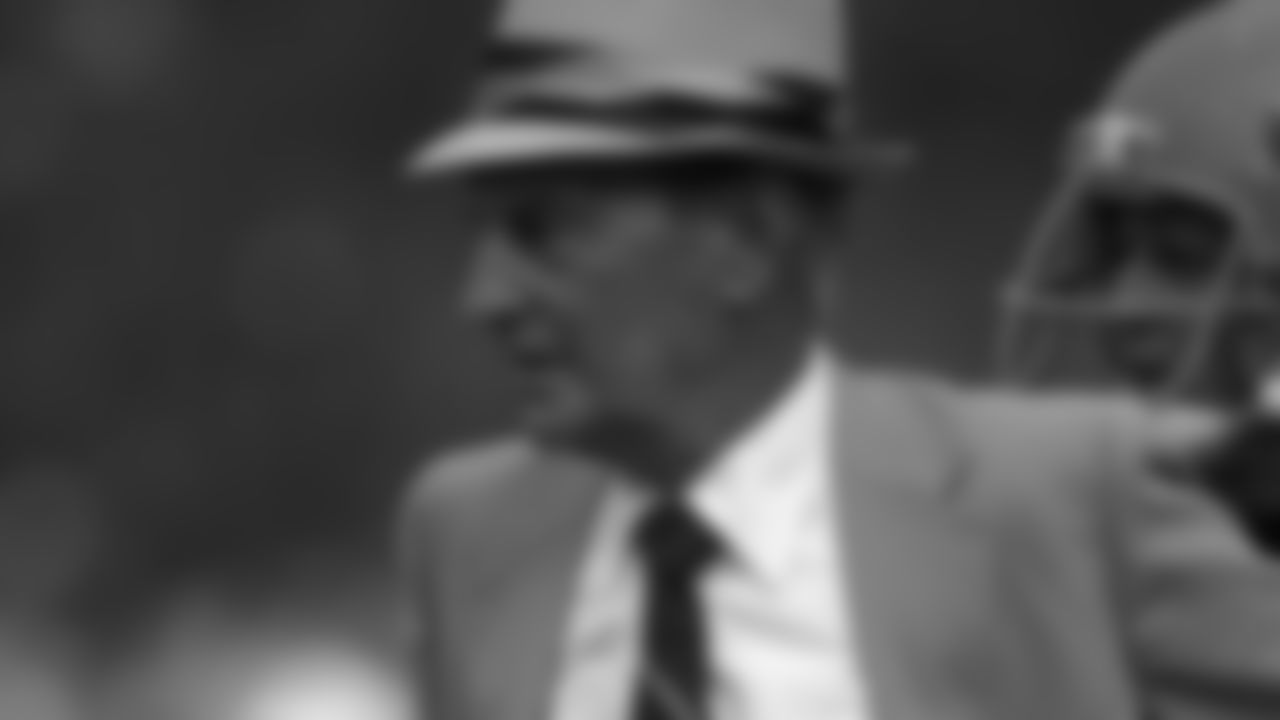
Paul Brown, Hall of Fame Class of 1967, looks on as he coaches the Cincinnati Bengals.
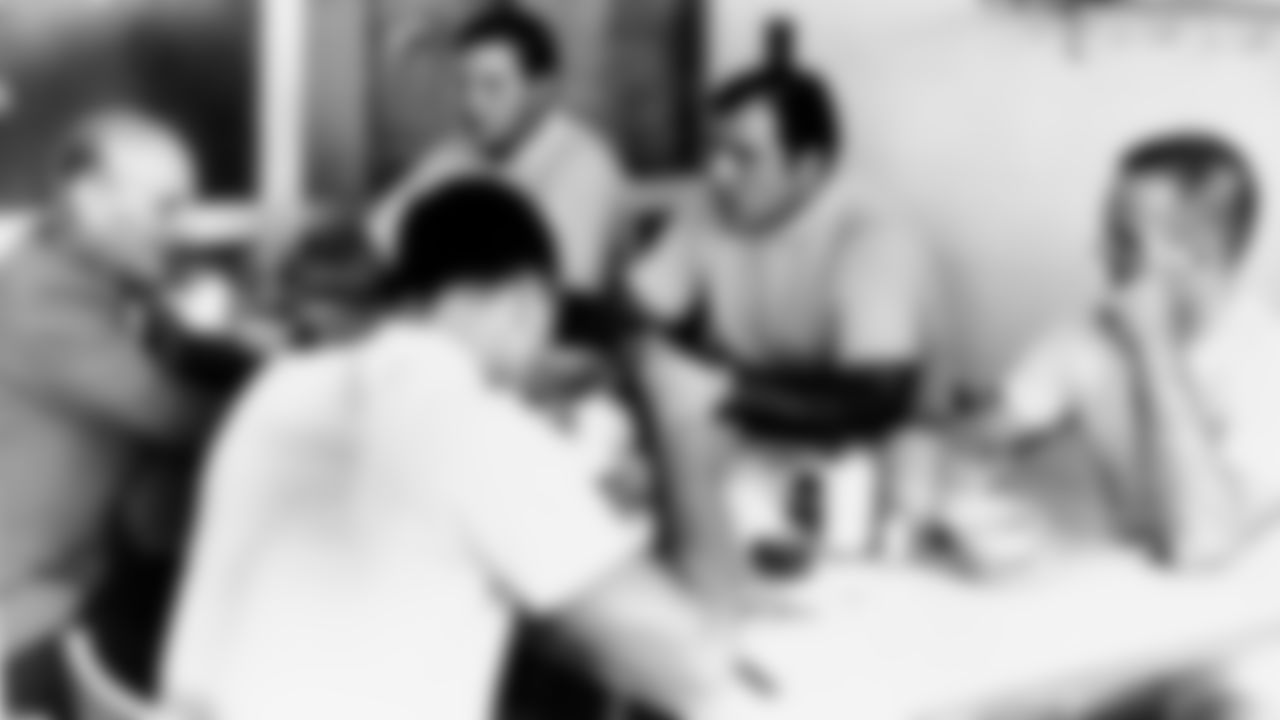
Paul Brown, Hall of Fame Class of 1967, extreme left, is the coach of the Cincinnati Bengals, who will start play in the American Football League this fall. Paul met at the training table with some rookie hopefuls at Wilmington College, Wilmington, Ohio, on July 6, 1968. Facing camera, left to right: Howard Fest, University of Texas; Ed Brantley, North Texas State; Wally Scott, University of Arizona. Bill Peterson from San Jose State (Calif.) has his back to the camera. (AP Photo)
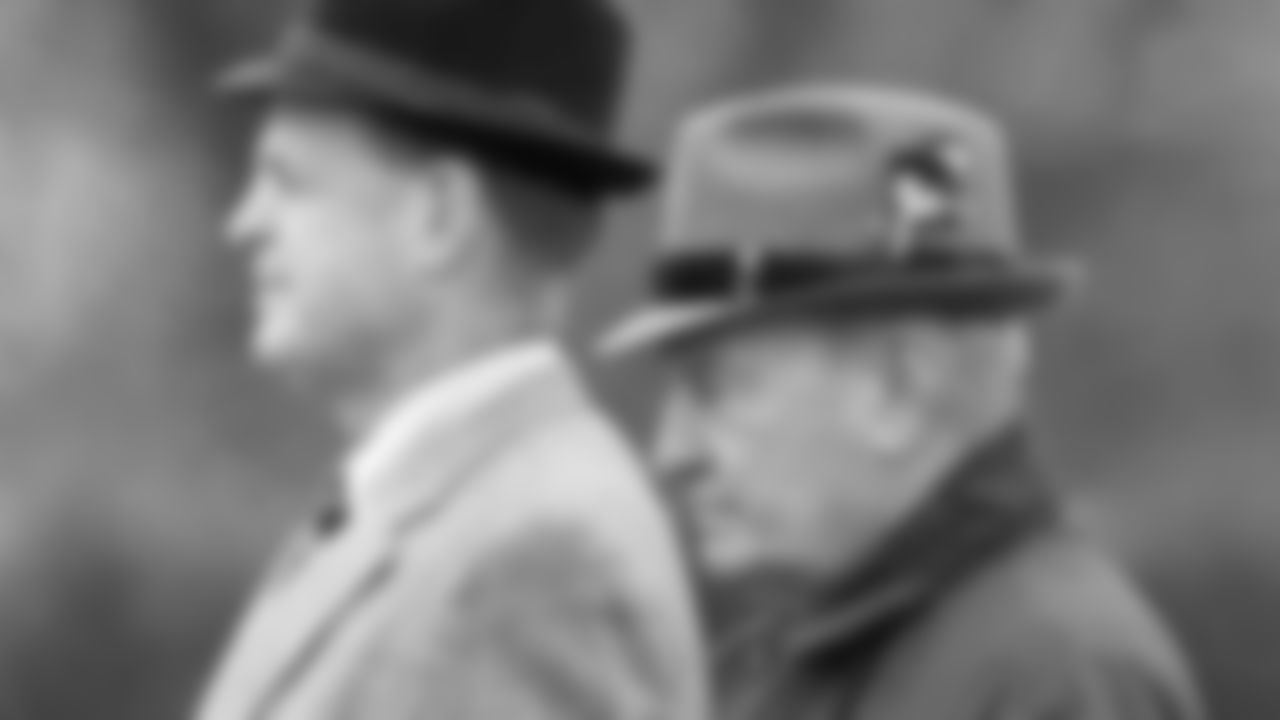
Cincinnati Bengals owner Mike Brown, shown standing with his father and Bengals founder, Paul Brown, right, during practice at Spinney Field in Cincinnati, Dec. 12, 1986, made an agreement with Hamilton County officials to name the Bengals new stadium after his father. (AP Photo/Al Behrman)













